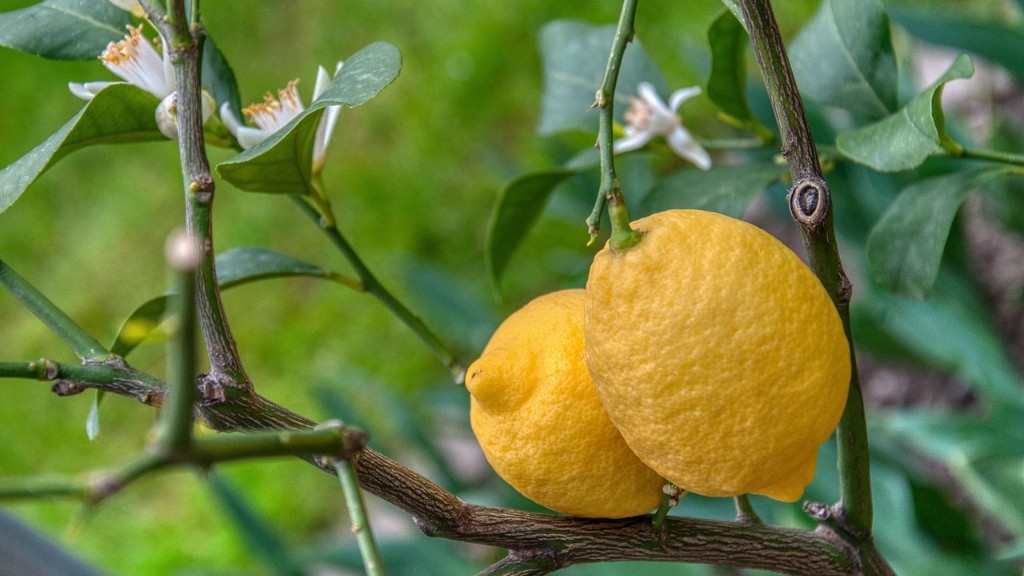How to Repot an Avocado Tree
Avocado trees are a great addition to any home or garden. They provide a lush, lush look and provide countless health benefits, with their healthy fats and oils. Growing an Avocado tree, however, does require a bit of patience, dedication and special care. The key to ensuring a happy and healthy avocado tree is to ensure it is regularly repotted and pruned. This guide has all the information needed to safely and properly repot an avocado tree.
Considerations
Before you start the repotting process, there are a few things to consider. Firstly, make sure the tree is mature enough. Most avocado trees are not ready to be repotted until they are at least three to four years old. If the tree is younger than this, it will be too delicate to repot. Secondly, be sure to choose a soil mixture specifically for an avocado tree. Regular potting soil or any other soil mixture might not provide the tree with enough perlite and calcium for it to survive. Lastly, always consider planting in an outdoor container, as avocados prefer outdoor climates and temperatures.
Preparation
Before commencing with the repotting process, take the time to properly prepare. First, gather all necessary materials: a quality soil mixture, a sturdy and lightweight container, stakes, and burlap or Spanish moss. It is important to also make sure the tree is receiving the best nutrition and when needed, prune the stems and roots of the tree.
Repotting Process
Once all the necessary preparation is done, it is time to start repotting. Start by pouring a layer of the soil mixture into the bottom of the container and creating a mini mound in the centre. Carefully remove the tree from its original container and place it on the mound. If necessary, trim any damaged or dead roots. Next, pour in more soil until the roots of the tree are completely covered. Finally, stake the tree and cover the surface of the soil with either burlap or Spanish moss. Make sure to water to the tree thoroughly.
Care Tips
Now the tree is repotted and you can sit back and enjoy. There are still a few follow up steps for the repotting process, however. Keep the soil lightly moist at all times, but make sure to not over water or let the soil become soggy as root rot can quickly occur. Additionally, be sure to apply a slow release liquid fertilizer specific to avocado trees. Lastly, be sure to keep an eye out for any pests like mites and ants and tackle the issue immediately.
Container Gardening
Aside from traditional repotting, avocado trees are also perfect for container gardening. If attempting to repotting an avocado tree by container gardening, it is important to choose the right container. Select a pot that is lightweight, and has drainage holes to ensure proper drainage. Be sure to also challenge the tree by adding in a soil that is both gritty and loamy. Container gardening can also provide great flexibility, moving the tree at any time. Additionally, make sure to consistently check the soil moisture as container trees need regular watering.
Light
Avocado Trees are among those plants that require at least five to six hours of sunlight per day. Without adequate sunlight, the tree cannot develop its foliage or fruits. When growing avocado trees indoors, be sure to place them near a large window, or consider using an artificial light source.
Humidity
Avocado trees tend to prefer tropical, humid climates. Consequently, ensuring adequate indoor humidity is key to a healthy tree. Use a humidifier, or mist the leaves of your avocado tree each day to increase humidity and keep them healthy.
Fertilizer
Although avocados are sensitive to over-fertilization, they do need fertilizer to ensure their growth. Pick a fertilizer specifically formulated for avocado trees and follow the instructions on the label to ensure the most bountiful harvest.
Pruning
At times, trees may need to be pruned and shaped to revive their looks and promote new growth. To do this, use clean and sharp pruning shears and trim any branches that are unproductive and damaged.
Troubleshooting
If the leaves of your avocado tree start to turn yellow this could be a sign of a few potential issues. It could be caused by too much or too little water, lack of light, temperature stress, or pests. Analyse the conditions of your tree and adjust accordingly.
Pests
Avocado plants can have a variety of pests, from mites to ants. Regularly inspect the leaves and branches of the tree and if any pests are seen, take the necessary steps to eradicate them.
Harvesting
When the crops have finally ripened, it is time for harvesting. Use caution to not damage the tree or the existing harvest when picking. Use a sharp knife and between thumb and index finger and gently remove the key from the stem.
Frost Protection
Avocado trees need protection from frost and cold weather. Always make sure to wrap the tree, especially when temperatures reach below 40F.
Conclusion
Repotting an avocado tree can take some time, effort and care, but the results can be truly stunning. With the right soil, container, light, and nutrition, your avocado tree will thrive and be a great source of beauty and health in your home or garden. Now, get ready to reap the harvest and enjoy the fruits of your labour.


